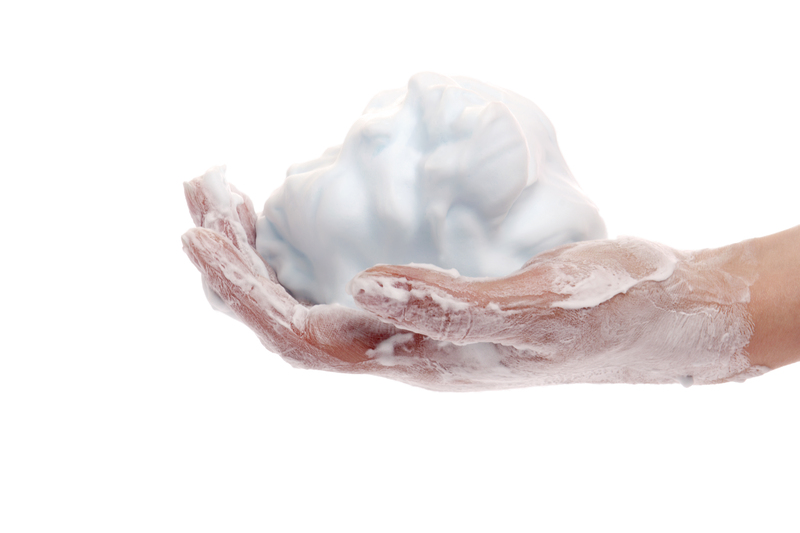Revitalize Your Kitchen with Simple Steps to Clean Burnt-on Stovetop Debris
Posted on 27/09/2025
Revitalize Your Kitchen with Simple Steps to Clean Burnt-on Stovetop Debris
Are you tired of looking at stubborn, burnt-on stains on your stovetop? A shining, clean stovetop transforms your entire kitchen. But burnt-on debris can seem impossible to tackle. Don't worry--this guide walks you through simple, effective, and safe methods to remove burnt-on debris from your cooking surface, helping you revitalize your kitchen in no time. Read on for actionable steps, professional cleaning secrets, and sustainable maintenance tips for sparkling results!
Why Cleaning Burnt-on Stovetop Debris Matters
Your stovetop is the heart of your kitchen. Over time, spills, splatters, and burnt-on stains accumulate, making your kitchen look grimy. But it's more than just appearance--leaving debris can downgrade appliance performance, cause bad odors, and harbor bacteria.
- Improves kitchen aesthetics
- Prevents damage and corrosion
- Reduces fire hazard risks
- Minimizes food contamination
Now, let's roll up our sleeves for a cleaner, more welcoming kitchen. Here are simple steps to clean burnt-on stovetop debris to bring back the shine!

Gathering the Necessary Supplies
Start by assembling all the essential cleaning tools for effective debris removal. Here's what you'll need for this stovetop cleaning journey:
- Non-abrasive sponge or cloth
- Baking soda and vinegar
- Dish soap
- Plastic scraper or old credit card
- Microfiber towel
- Hot water
- Lemon juice (optional)
- Gloves for sensitive skin
Having the right cleaning supplies ensures you approach burnt-on messes safely and efficiently.
Pro Tip:
Always check your appliance's user manual before applying any cleaning solution--different stovetop materials require specific care.
Step-by-Step Guide to Clean Burnt-on Stovetop Debris
1. Let Everything Cool Down
Never start cleaning a hot stovetop. Wait until all burners and surfaces cool completely. This prevents burns and makes cleaning safer.
2. Remove Loose Debris
Begin with a dry wipe-down. Use a dry microfiber towel to get rid of any loose crumbs and bits. This step clears the area so you can focus on the truly burnt-on grime.
3. Apply a Cleaning Solution
Choose a cleaning solution appropriate for your stove type:
- For gas stovetops: Dilute dish soap in warm water for general cleaning. For burnt-on debris, apply a paste of baking soda and water.
- For electric/stainless steel/glass stovetops: Use a mixture of vinegar and baking soda. Always avoid abrasive pads on delicate glass!
Generously apply your chosen solution to the stained areas. Let it sit for 10-15 minutes. This loosens up the burnt-on debris, making it easier to wipe away. For extra cleaning power, a few drops of lemon juice can help dissolve grease and neutralize odors.
4. Scrub Gently Yet Thoroughly
With a non-abrasive sponge or cloth, gently scrub the treated areas in a circular motion. For stubborn, caked-on patches, use a plastic scraper or an old credit card, holding it at a shallow angle so you don't scratch the surface. Never use steel wool or harsh pads on glass or coated surfaces.
- For coil burners: Remove and soak in hot soapy water, then clean the area beneath.
- For grates and burner caps on gas stoves: Soak separately in hot soapy water for 20-30 minutes.
5. Rinse Thoroughly
After all burnt-on debris loosens, use a damp microfiber towel to wipe the stovetop clean. Rinse and wring the towel frequently to prevent spreading grime.
6. Buff to a Shine
Finish your stovetop by drying it with a clean towel, then using a dry microfiber cloth to buff to a high shine. For glass cooktops, a spritz of vinegar wiped with a soft cloth can remove streaks and leave a sparkling finish.
Try It for Yourself!
Cleaning burnt-on stove debris doesn't have to be a chore. With these simple, step-by-step cleaning methods, your stovetop will look revitalized, improving the entire kitchen's appearance.
Deep Cleaning Techniques for Stubborn Burnt-on Stains
If you encounter debris that just won't budget with basic cleaning, try these deep cleansing hacks:
- Baking Soda & Vinegar Soak: Sprinkle baking soda directly onto the burnt area, then spray or pour a small amount of white vinegar. The resulting fizz helps lift stubborn stains. Let it sit for 15-20 minutes before scrubbing.
- Hot Towel Method: Soak a clean towel in hot water. Place it over the worst areas for 5-10 minutes. The steam softens debris, making it easier to remove.
- Lemon Juice Paste: Create a paste from lemon juice and baking soda, apply generously, let sit, and then wipe clean for a fresh scent and stain-fighting power.
For glass or ceramic stovetops, use specialized cooktop cleaners and non-scratch pads, following product instructions. Always test any new cleaning approach on a small, inconspicuous area first.
Preventing Burnt-on Stovetop Debris - Kitchen Maintenance Tips
Now that you've achieved a spotless surface, let's keep it that way! Regular kitchen maintenance is the secret to preventing stubborn burnt-on mess from returning:
- Wipe spills immediately: As soon as your cooktop cools, wipe up any spills to keep them from burning on next time you cook.
- Use lids and splatter guards: Prevent messes before they start by keeping pots and pans covered.
- Deep clean weekly: Even without visible debris, wipe down burners, grates, and the stove surface weekly to stop buildup.
- Clean under removable parts: Burners and grates should be lifted and cleaned under as well to prevent buildup hiding beneath.
- Inspect for damage: Regularly check for chips, cracks, or burns and address immediately to avoid bigger issues.
- Consider stovetop liners: These heat-resistant sheets can catch spills before they mess up your appliance, making cleaning so much easier.
Consistent upkeep ensures a safe, attractive, and odor-free kitchen environment!
Best Natural Products for Cleaning Stovetop Debris
Prefer non-toxic, eco-friendly options? Many pantry staples double as excellent degreasers and burnt-on debris removers. Here are the best natural cleaners for burnt-on stovetop messes:
- Baking Soda: Mildly abrasive and great at absorbing odors. Perfect for creating scrubbing pastes.
- White Vinegar: Dissolves grease, neutralizes smells, and removes mineral deposits.
- Lemon Juice: Natural degreaser and terrific for streak-free shine.
- Castile Soap: Plant-based, gentle, and effective on all surfaces.
These solutions are safe for families, pets, and the environment--while being tough on burnt messes!
Frequently Asked Questions about Cleaning Burnt-on Stovetop Debris
How often should I deep-clean my stovetop?
Weekly cleaning is ideal for most active kitchens. However, for households that cook large meals or fry food often, wiping down daily and deep-cleaning biweekly helps prevent burnt-on messes.
What's the best way to remove burnt sugar from a glass cooktop?
Try the baking soda and vinegar fizz method, then gently scrape with a plastic scraper. Never use metal tools on a glass cooktop or harsh chemicals that could etch the surface. Finish with glass cleaner for shine.
Is it safe to use commercial oven cleaner on my stovetop?
Oven cleaners are often too harsh for stovetops, especially glass or enamel. Always use a cleaner specifically formulated for stovetops and check your manufacturer's guidance.
What should I avoid when cleaning my stovetop?
- Avoid steel wool, metal spatulas, or harsh abrasives--they can scratch most stovetop surfaces.
- Don't use ammonia or bleach on certain finishes, as they may discolor or damage.
- Never submerge electrical parts or ignition switches in water.

Benefits of a Clean, Revitalized Stovetop
Enjoying a sparkling stove isn't just about aesthetics. When you clean burnt-on stovetop debris routinely, you:
- Boost kitchen hygiene
- Improve meal taste (no lingering burnt smells)
- Extend appliance lifespan
- Impress guests with kitchen pride
- Reduce the chance of accidental fires
Transform your cooking experience with a gleaming, fresh stove--it invites creativity and culinary joy!
Final Thoughts: Revitalize Your Kitchen, One Clean Stovetop at a Time
Now you know how easy it is to revitalize your kitchen by cleaning burnt-on stovetop debris. With the right tools and routine, your stovetop can look brand new--no harsh chemicals or expensive products required. Remember the power of simple, consistent cleaning habits and natural solutions to keep your kitchen the shining heart of your home. Happy cooking and cleaning!
Ready to show your stovetop some love? Try these steps today and experience a revitalized kitchen!
```



